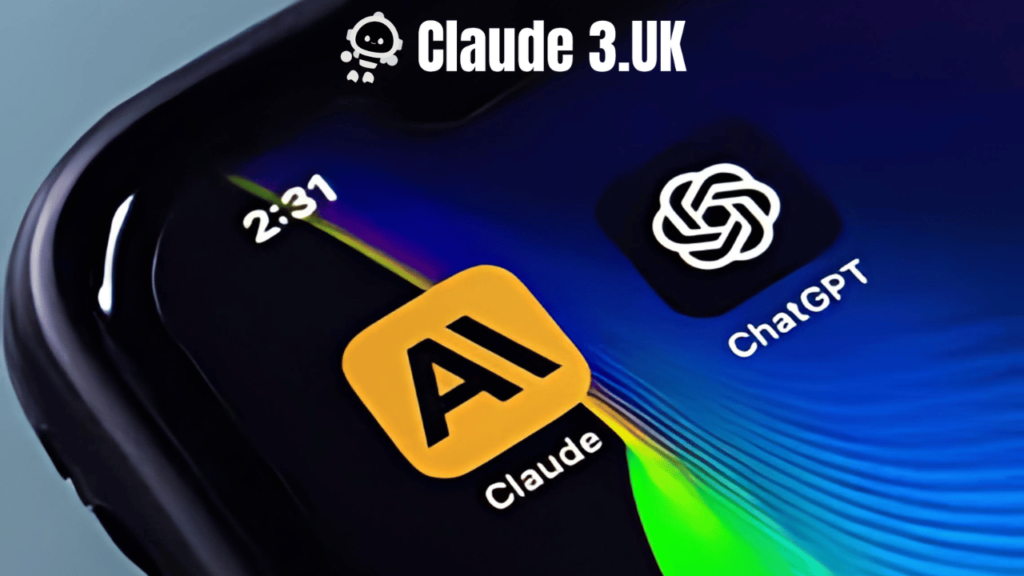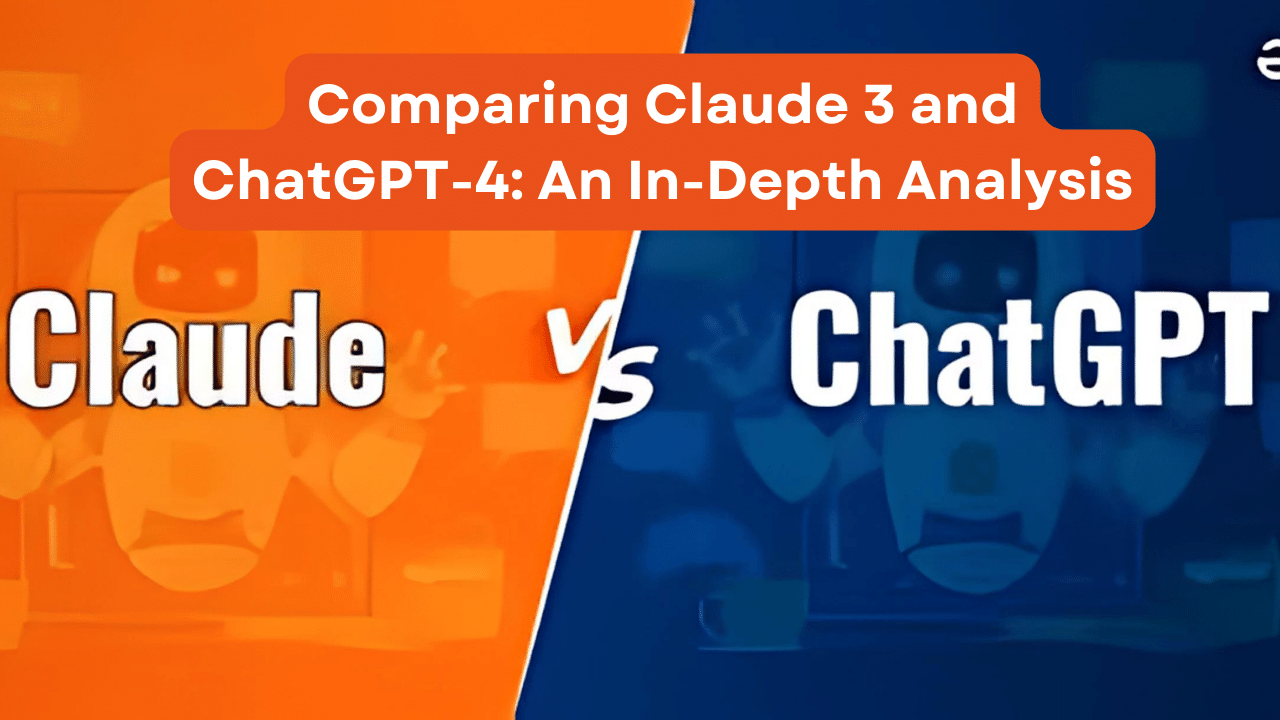Artificial intelligence has made remarkable strides in recent years, with advanced language models becoming integral tools in various domains. Among the leading models in 2024 are Claude 3 by Anthropic and ChatGPT by OpenAI. This article offers a comprehensive comparison of these two AI models, examining their features, performance, applications, and overall impact. By exploring their strengths and weaknesses, we aim to provide a clear understanding of which model might be better suited for different use cases.
Introduction to Claude 3 and ChatGPT-4
Overview of Claude 3
Claude 3 is a family of AI models developed by Anthropic, designed to handle a wide range of cognitive tasks. The family includes three models: Haiku, Sonnet, and Opus, each offering different levels of performance and capability.
- Claude 3 Haiku: Optimized for efficiency and speed, ideal for basic applications.
- Claude 3 Sonnet: Offers enhanced performance, suitable for more demanding tasks.
- Claude 3 Opus: The flagship model with the highest performance, designed for complex and resource-intensive tasks.
Overview of ChatGPT-4
ChatGPT developed by OpenAI, is the fourth iteration of the GPT (Generative Pre-trained Transformer) series. It builds on the successes of its predecessors with improved natural language understanding and generation capabilities.
- General Capabilities: Enhanced contextual understanding, better coherence, and more human-like responses.
- Specialized Versions: Available in various configurations tailored for specific applications, such as code generation, conversational AI, and more.
Core Architecture and Technology
Claude 3 Architecture
Claude 3 models are built on advanced transformer architectures, utilizing large-scale neural networks to process and generate text. Key technological features include:
- Deep Learning Techniques: Employing transformer-based neural networks for superior language processing.
- Contextual Understanding: Advanced algorithms to maintain context over long conversations and complex queries.
- Multimodal Capabilities: Ability to handle text, voice, and visual inputs, making it versatile for different applications.
ChatGPT-4 Architecture
ChatGPT also leverages transformer architectures, with significant enhancements over previous versions. Key aspects of its architecture include:
- Larger Model Size: Increased number of parameters compared to GPT-3, allowing for more nuanced understanding and generation.
- Improved Training Data: Trained on a diverse and extensive dataset, covering a wide range of topics and languages.
- Adaptive Learning: Incorporates mechanisms for better handling of ambiguous queries and maintaining conversation flow.

Performance and Accuracy
Language Understanding and Generation
Claude 3
Claude 3 models, particularly Sonnet and Opus, exhibit strong performance in language understanding and generation. They are capable of:
- High Accuracy: Generating accurate and contextually relevant responses.
- Complex Query Handling: Managing complex and multi-turn interactions effectively.
- Multilingual Support: Providing robust support for multiple languages.
ChatGPT-4
ChatGPT is known for its superior language generation capabilities, with notable improvements in:
- Coherence: Producing more coherent and contextually appropriate responses.
- Versatility: Handling a broader range of topics and generating detailed explanations.
- Adaptive Responses: Adjusting responses based on the user’s intent and context.
Benchmark Comparisons
Various benchmarks and tests highlight the strengths of both models. For example:
- Natural Language Processing (NLP) Benchmarks: Both Claude 3 Opus and ChatGPT-4 perform exceptionally well, often leading industry standards in tasks like text completion, translation, and summarization.
- User Interaction Metrics: ChatGPT-4 generally scores higher in terms of user satisfaction and conversational flow, while Claude 3 Opus excels in specialized tasks requiring deep contextual understanding.
READ MORE: Is Claude 3 Easy to Use for Coding?
Applications and Use Cases
Business and Enterprise
Claude 3
Claude 3 models, especially Opus, are extensively used in business and enterprise applications such as:
- Customer Service: Automating customer interactions, providing accurate information, and resolving queries efficiently.
- Business Intelligence: Analyzing large datasets to derive insights and support decision-making processes.
ChatGPT-4
ChatGPT-4 is widely adopted for:
- Virtual Assistants: Enhancing user interactions in customer service, personal assistance, and automated support.
- Content Creation: Assisting in generating marketing content, articles, and social media posts with high coherence and creativity.
Healthcare
Claude 3
Claude 3 Opus is leveraged in healthcare for:
- Diagnostic Assistance: Analyzing patient data to provide diagnostic suggestions and treatment options.
- Patient Support: Offering personalized patient interactions, scheduling appointments, and providing health information.
ChatGPT-4
ChatGPT supports healthcare applications such as:
- Medical Research: Assisting researchers by summarizing medical literature and providing insights from vast datasets.
- Telemedicine: Facilitating remote consultations by engaging with patients and collecting preliminary health information.
Education
Claude 3
Claude 3 models, particularly Sonnet, are used in educational settings for:
- Tutoring: Providing personalized tutoring and answering student queries in various subjects.
- Content Development: Assisting educators in creating lesson plans, quizzes, and educational materials.
ChatGPT-4
ChatGPT is popular in education for:
- Interactive Learning: Engaging students in interactive and adaptive learning experiences.
- Language Learning: Offering language practice and immersion through conversational AI.
Pricing Models
Claude 3 Pricing
Claude 3 employs a tiered pricing structure based on token usage, with additional access tiers:
- Token-Based Pricing:
- Input Tokens: $15 per 1 million tokens.
- Output Tokens: $75 per 1 million tokens.
- Access Tiers:
- Standard Access: $15 per month for individuals or small teams.
- Enterprise Access: $75 per month for larger organizations with advanced needs.
ChatGPT-4 Pricing
ChatGPT’s pricing varies depending on the usage and specific plan chosen by the user:
- Subscription Plans:
- Basic Plan: Offers a limited number of queries per month at a lower cost.
- Pro Plan: Higher query limits and additional features for more intensive usage.
- API Usage: Pricing based on the number of API calls and the complexity of the tasks.
User Experience and Accessibility
User Interface and Tools
Claude 3
Claude 3 offers a user-friendly platform with tools for easy integration:
- Claude.ai Platform: A comprehensive interface for managing interactions and customizing AI applications.
- API Access: Robust API documentation and support for seamless integration into existing systems.
ChatGPT-4
ChatGPT provides a well-designed interface and integration tools:
- OpenAI Dashboard: User-friendly dashboard for managing queries, tracking usage, and accessing support.
- Developer Tools: Extensive documentation and SDKs for integrating ChatGPT-4 into various applications.
Support and Resources
Claude 3
Claude 3 offers different levels of support depending on the access tier:
- Standard Support: Basic support through standard channels.
- Enterprise Support: Priority support, dedicated account managers, and additional resources for enterprise users.
ChatGPT-4
OpenAI provides comprehensive support options:
- Basic Support: Standard support for all users, including access to community forums and documentation.
- Premium Support: Enhanced support options for higher-tier plans, including dedicated support teams and faster response times.
Ethical Considerations
Claude 3
Anthropic emphasizes ethical AI development, focusing on:
- Bias Mitigation: Efforts to reduce biases in AI outputs and ensure fairness.
- Transparency: Clear communication about how the models work and their limitations.
- Data Privacy: Strong measures to protect user data and ensure compliance with privacy regulations.
ChatGPT-4
OpenAI is committed to ethical AI practices, including:
- Responsible Use: Guidelines for responsible use of AI to prevent misuse.
- Bias and Fairness: Ongoing research to identify and mitigate biases in AI models.
- User Privacy: Robust privacy policies and data protection measures.
Future Prospects and Developments
Claude 3
Anthropic plans to continue enhancing Claude 3 models with:
- Improved NLP Capabilities: Further advancements in natural language processing to enhance performance.
- Expanded Applications: Exploration of new use cases in emerging industries.
- Continuous Learning: Updates and improvements based on user feedback and ongoing research.
ChatGPT-4
OpenAI’s future plans for ChatGPT include:
- Increased Scalability: Enhancements to handle larger and more complex queries.
- Broader Language Support: Expansion of language capabilities to support more languages and dialects.
- Innovative Features: Development of new features to improve user experience and expand functionality.
Conclusion
Both Claude 3 and ChatGPT-4 represent significant advancements in AI technology, each with its own strengths and applications. Claude 3’s tiered model offers flexibility and specialized capabilities, making it suitable for diverse industries and use cases. ChatGPT-4’s superior language generation and adaptive responses make it a powerful tool for interactive applications and content creation.
Ultimately, the choice between Claude 3 and ChatGPT-4 depends on the specific needs and goals of the user, whether it be efficiency, advanced support, or exceptional conversational abilities. As AI continues to evolve, both models are poised to play pivotal roles in shaping the future of human-computer interaction.
FAQs
1. What are Claude 3 and ChatGPT-4?
Claude 3 and ChatGPT-4 are advanced AI language models designed for natural language understanding and generation. Claude 3 is developed by Anthropic, while ChatGPT-4 is developed by OpenAI.
2. How do Claude 3 and ChatGPT-4 differ in their training data?
Claude 3 and ChatGPT-4 are trained on large datasets sourced from diverse internet content, but the specific datasets and preprocessing techniques may differ, impacting their performance and responses.
3. How do Claude 3 and ChatGPT-4 compare in terms of conversational abilities?
Both models excel in conversational AI, but ChatGPT-4 may have a slight edge due to its extensive fine-tuning for interactive dialogue and wide-ranging conversational contexts.
4. How do Claude 3 and ChatGPT-4 handle coding assistance?
Both Claude 3 and ChatGPT-4 provide coding assistance, with capabilities to generate, complete, and debug code. ChatGPT-4 has a strong track record with extensive language support and specific coding scenarios.
5. Are there any significant differences in integration capabilities between Claude 3 and ChatGPT-4?
Both models offer robust integration capabilities through APIs, though the specific features and ease of integration may vary. ChatGPT-4 is widely used and supported across many platforms, while Claude 3 may offer specialized integrations.
6. How do Claude 3 and ChatGPT-4 ensure data privacy and security?
Both Claude 3 and ChatGPT-4 implement strong data privacy and security measures, adhering to industry standards and regulations to protect user data and ensure confidentiality.
7. What are the pricing models for Claude 3 and ChatGPT-4?
Pricing models for both models vary based on usage and subscription plans. ChatGPT-4 typically offers tiered pricing with free and paid options, while Claude 3’s pricing may be customized based on enterprise needs.
8. How do Claude 3 and ChatGPT-4 perform in handling multilingual tasks?
ChatGPT-4 supports a wide range of languages and performs well in multilingual tasks. Claude 3 also supports multiple languages but may have different strengths in specific linguistic contexts.
9. Can Claude 3 and ChatGPT-4 be customized for specific industries?
Yes, both models can be customized for specific industries, providing tailored solutions for healthcare, finance, marketing, and more, based on user requirements and fine-tuning.
10. What are the user support options for Claude 3 and ChatGPT-4?
Both Claude 3 and ChatGPT-4 offer user support through documentation, tutorials, and customer service. ChatGPT-4 may have more extensive community support due to its broader user base.
11. Where can I find more information about Claude 3 and ChatGPT-4?
More information about Claude 3 can be found on Anthropic’s official website, while details about ChatGPT-4 are available on OpenAI’s website. Both sites provide comprehensive resources and contact options for inquiries.

3 thoughts on “Comparing Claude 3 and ChatGPT-4: An In-Depth Analysis”